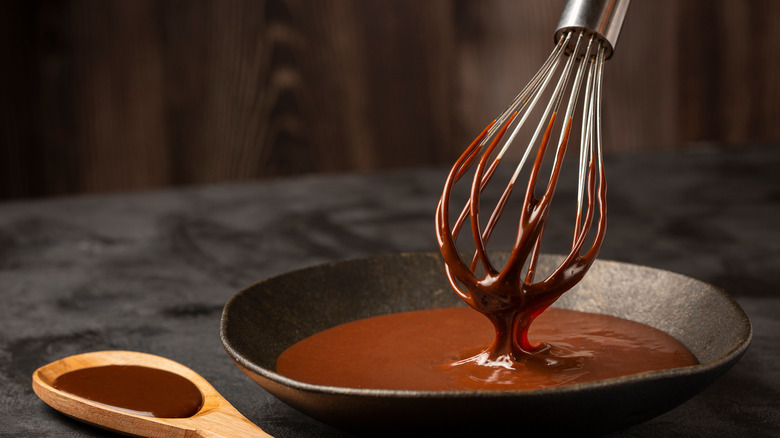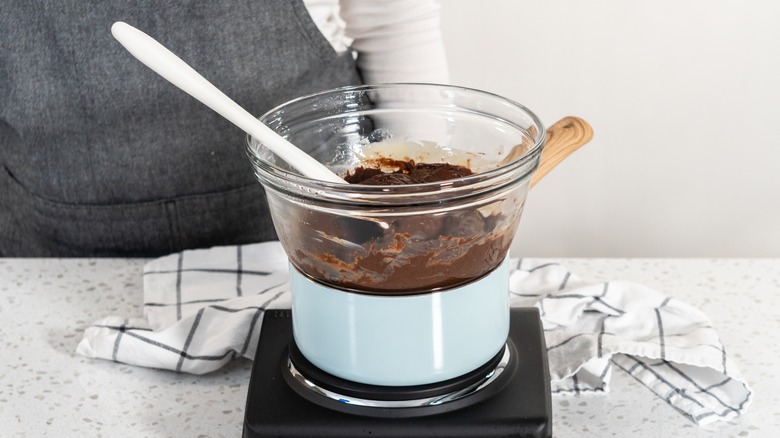How To Fix Seized Chocolate With Just Boiling Water
Smooth, luscious chocolate turns ordinary pretzels into confectionary masterpieces, makes strawberries a culinary delight, and adds a lovable layer to cookies and cakes. But, what seems like the simple task of melting chocolate can be a temperamental nightmare without the right conditions.
When melted properly, chocolate flows with a homogenous consistency. Turn the heat up too much, however, and it will burn. Or, add a drop of water, and it seizes, turning the entire bowl into a clumpy, grainy mess. Although you can't save burnt chocolate, there is a way to salvage seized chocolate if you don't need it for baking. And all it requires, believe it or not, is more water.
To reverse engineer the seized chocolate, return the contents to a double boiler where you'll have the most control over the process. Just ensure the bowl does not touch the boiling water as that's too much direct heat and will cause the chocolate to scorch, especially if it's milk or white chocolate, which has a lower melting point than dark or bittersweet chocolate.
Then, in a separate pot, bring a cup of water to a boil. Add one teaspoon of boiling water at a time to the seized chocolate, whisking constantly until it returns to its former glory. Unfortunately, this process will dilute the chocolate, so it's not recommended to use this hack if you need it for baking, but it can still be used to coat baked goods, make chocolate sauce, and even garnish treats.
How to melt chocolate without seizing it
When cocoa beans and sugar are processed into chocolate, all their moisture is removed during the refinement process in order to create a smooth piece that melts in your mouth. Reintroducing moisture, however, will cause the chocolate to seize, turning it into an unappetizing paste. Unfortunately, this is also the case for other liquids like vanilla extract, so avoid adding too much directly to melted chocolate.
Chocolate can successfully be melted on the stovetop, in the microwave, or even with a blowdryer without the seizing effect happening — if you follow a few key tips. First, ensure the bowl and tools you're using to melt the chocolate are completely dry. A splash of water or steam from a double boiler can change the chocolate's texture from silky to grainy very quickly. It may seem nit-picky, but a recently washed wooden spoon can also be a factor, so make sure it's dry too or avoid porous utensils and stick to rubber scrapers instead.
Also, chocolate should be melted gradually over a gentle heat to avoid burning. This means the size of the bowl is essential. If it's too small, the chocolate will take a long time to melt. But if the bowl is too large, you risk burning it along the edges. Another big tip is to stir melting chocolate frequently to ensure it's melting evenly, and take it off the heat before it's completely smooth; the residual heat will finish the process and lower the risk of scorching.


